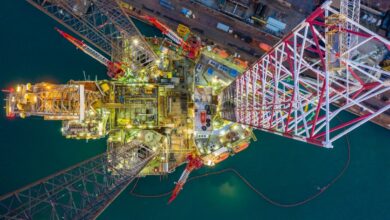Madsen: Industry must embrace innovation, digitization to drive sustainable change
By Linda Hsieh, Managing Editor
The drilling industry must transform itself in order to reach a sustainable and lower level of cost for oil production, and this transformation can’t be achieved by making small improvements. “We need to rethink our approach to innovation,” Jorn Madsen, CEO of Maersk Drilling, said at the 2017 IADC Advanced Rig Technology Conference on 24 October in Amsterdam. “We need to embrace digital solutions that can bring drilling productivity to the next level – and not only drilling productivity but also productivity in other parts of the value chain.” Further, to make the kind of significant improvements that are needed, companies must recognize that this is a commodity industry. “We, as an industry, need to come to terms with the fact that, at the end of the day, we produce a commodity. We have passed a point in time where we are allowed to not think as though oil is not a commodity.”
Mr Madsen suggested that there are three primary factors that will drive the necessary changes in the industry: innovation, digital technologies and partnerships. First, it’s imperative for the industry to create environments that will nurture innovation. “We need to find ways of getting new ideas to thrive, and we need to be willing to focus on new ways of working,” he said. In most organizations, innovation happens at the grassroots level, but those seeds for innovation often get quashed, especially when they threaten the status quo of the organization.
To address this at Maersk Drilling, Mr Madsen said, he asked the company’s Chief Information Officer (CIO) to leave his role for a time period, with the mandate of exploring new business models, especially within digital. Within two weeks, the CIO had established a new community for innovation working with universities and individual who were interested in innovation. “It’s still early days – we’ve done this for about three months – but we are already testing digital prototypes and digital solutions that were developed with a speed far in excess of what we’ve seen before in our development projects,” Mr Madsen said, adding that one recent prototype was done in just one week.
The second driver of change is digitization, and Mr Madsen urged the industry to more fully embrace digitization and different ways of leveraging data. “Storing and accessing data, which is what we have mainly been doing in the past, is no longer enough,” he said. “We need to become good at analytics, and we need to use data to build new models for businesses which can help solve the fundamental problem of driving down the cost of oil production.”
Back in 2010-2011, Maersk had already introduced digital dashboards that created an easy overview of performance to be shared across the company. It allowed for KPIs to be easily set, tracked and measured, leading to more performance-based and data-driven drilling operations, Mr Madsen described. “The dashboard was the first wave, and the second wave was more related to how we operate,” he added. Maersk then introduced its own form of the Lean process – plan, do, study, act. “It allowed us to address performance, both internally and the customer-facing performance, and we were now able to run performance improvement projects offshore, which addressed things like tripped speed, BOP handling and other issues that impacted the total well NPT.” From 2011 to 2017, Maersk Drilling improved its average unrestricted tripping speed fleetwide by 89%.
Looking forward, Mr Madsen said he sees an additional 20% improvement potential by using digital solutions. “With the data that we get, we can now introduce algorithms to predict theoretical performance, and the ideal theoretical performance is then our new target. In the near future, we will add downhole data to this equation, making it more sophisticated. That means that we will be able to basically drill on the data in real time that comes up from the well.”
Finally, the third driver to drive change is partnerships, and Mr Madsen noted that the industry must transform its value chain. “In any other industry that’s been at a point in history where we are, it always meant they transformed the value chains. We need to break down the silos that are in between us. We need to accelerate development of new technologies that may not be the same technologies that we saw in the past.”




